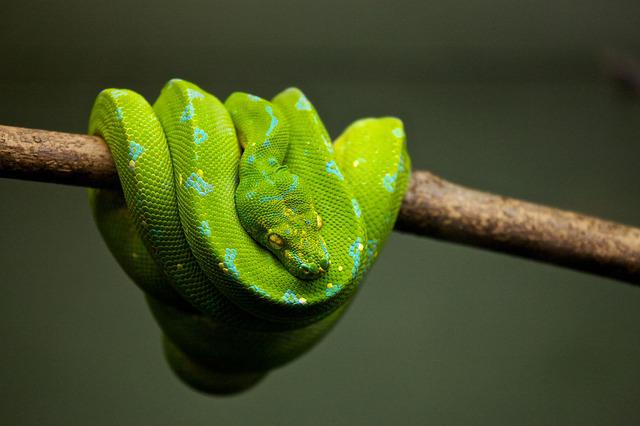Have you ever seen a black rat snake kink its body? It’s a pretty strange sight, but there’s actually a good reason for it. In this blog post, we’ll take a closer look at the curious behavior of black rat snakes and find out why they do it.
Introduction
The curious behavior of black rat snakes has puzzled researchers for many years. However, recent studies have shed some light on this perplexing phenomenon, and it seems that there are actually several possible explanations for why these snakes kink their bodies in such a particular way.
Some scientists believe that the kinking serves an important function when it comes to hunting prey, helping black rat snakes to better maneuver around branches and other obstacles. Others argue that it may be a result of mating or dominance behaviors, or even a way for the snakes to defend themselves in the face of threats.
Whatever the case may be, the behavior of black rat snakes is certainly one worth studying. After all, this fascinating group of reptiles has much to teach us about nature and animal behavior. And with continued research and observation, we can hope to unravel even more of this mystery and uncover exactly why these incredible creatures occasionally kink their bodies.
Why Do Rat Snakes Kink Their Bodies?
There is a lot that we still don’t understand about rat snakes, especially when it comes to their behavior. One common question that scientists have been trying to answer for years is why rat snakes often kink their bodies in order to move.
There are a number of different theories as to why they do this, but some of these ideas have yet to be sufficiently supported by scientific evidence. Some experts believe that this behavior may help the snake better navigate through tight spaces, such as the cavities of trees or thick patches of underbrush.
Others hypothesize that kinking may help rat snakes avoid large boulders or ventilation ducts, which could injure them if they were unable to adjust and move around these obstacles. Despite these potential benefits, however, there is still much more research needed in this area in order to fully understand the unique behaviors and adaptations of rat snakes.
What Are the Benefits of This Behavior?
Rat snakes are a type of non-venomous snake that is found throughout much of the world. They are well known for their ability to kink, or coil tightly into a knot when they feel threatened. What many people may not realize, however, is that there are many benefits to rat snakes’ kinking behavior.
For one thing, they use the technique as a defensive mechanism, which allows them to escape from predators or other threatening situations. This ability also helps them to move quickly and dexterously through their natural habitat, allowing them to seek out food and shelter more effectively.
Furthermore, studies have shown that rat snakes’ tendency to kink may actually be an evolutionary adaptation that has helped them to survive for millennia. While much more research still needs to be done on these fascinating creatures, it is clear that rat snakes’ knack for coiling tightly into knots has been key in ensuring their survival both now and in the future.
Do all snakes kink?
Despite what many believe, not all snakes kink their bodies when threatened. In reality, only a small percentage of snakes exhibit this behavior for a variety of different reasons.
Some snakes kink in order to scare off potential predators or to make themselves appear larger and more intimidating. Other snakes kink simply as a way to stabilize their body when moving along uneven terrains, such as over rocks or tree roots.
Finally, some snakes kink in response to stress or distress, making it an involuntary movement that usually occurs when the snake is attempting to escape from an uncomfortable situation. So while all snakes may have the ability to coil their bodies like a spring, only a select few actually use this quirk as a tool for protection or intimidation.
The breeds of snakes that kink
Snakes are often feared because of their reputation for being dangerous, but there are actually many different breeds of snakes, only a few of which are venomous. Another trait that some snakes have is the ability to kink or form sharp curves in their bodies. This is a defense mechanism that allows them to intimidate predators and escape from tight spaces.
The following are some of the most common kinking snakes:
- -Reticulated Python: The Reticulated Python is a large snake that is native to Southeast Asia. It is one of the longest snakes in the world and can grow up to 30 feet in length. Reticulated Pythons are also known for their ability to kink their bodies into sharp curves.
- -Burmese Python: The Burmese Python is another large snake that is native to Southeast Asia. Like the Reticulated Python, it can grow up to 30 feet in length and is an excellent kinker.
- -Corn Snake: Corn snakes are a type of rat snake that is native to the southeastern United States. They are relatively small snakes, only growing to about 3-4 feet in length. However, they are still capable of forming sharp curves in their bodies.
Conclusion
There are many theories as to why black rat snakes kink, but the most likely explanation is that it is a defense mechanism. When confronted by a predator, the snake may coil up and strike, and the kink in its body makes it difficult for the predator to grab hold.
The kink also makes the snake appear larger and more menacing, which may scare off some predators. Additionally, the kink may help the snake climb trees or other objects more easily. Whatever the reason, it is clear that black rat snakes have evolved to use their kinks to their advantage.




